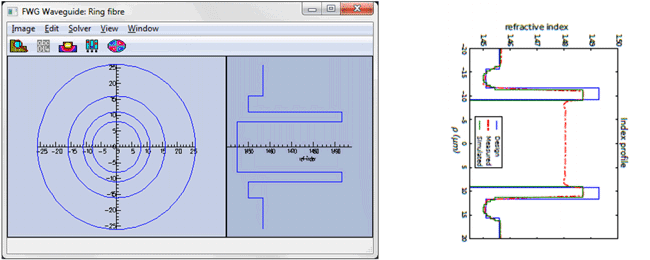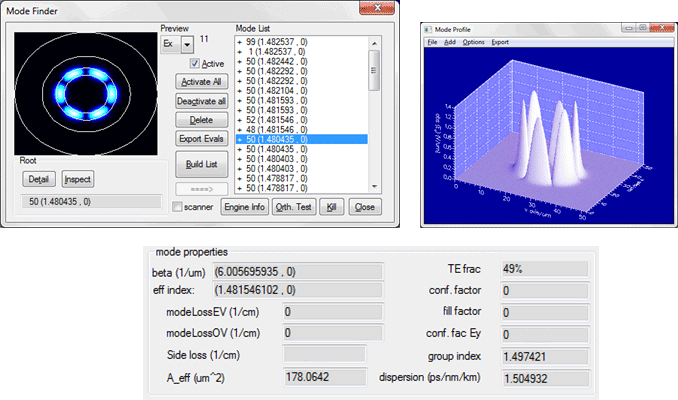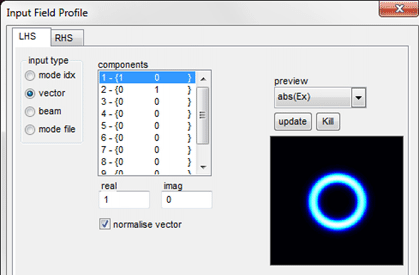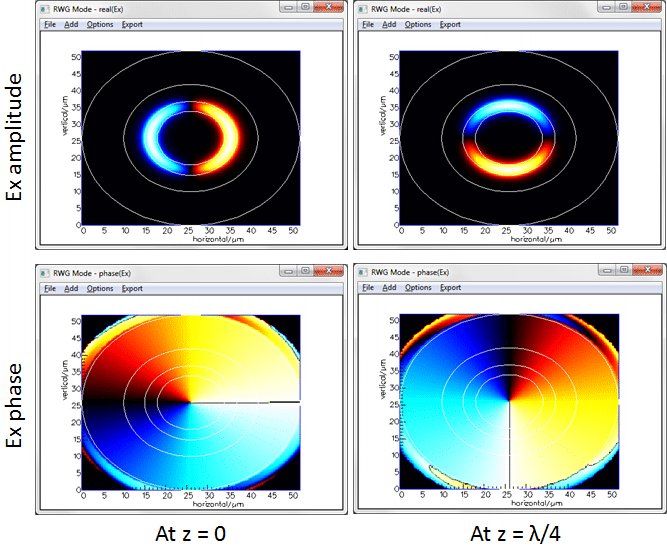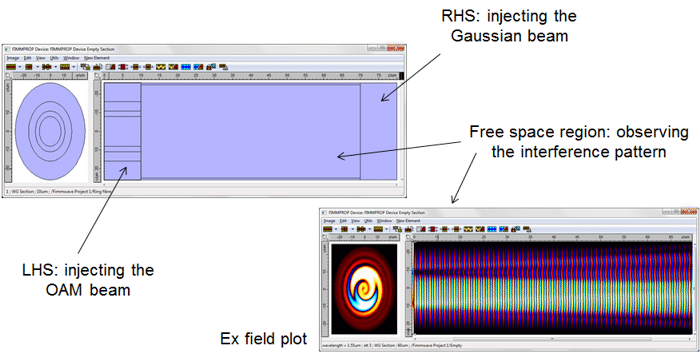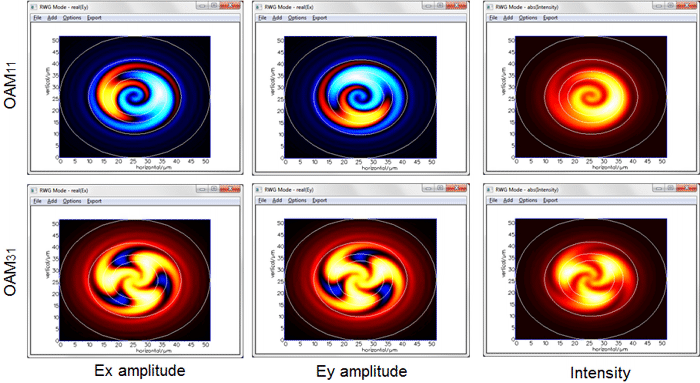FIMMPROPA bi-directional optical propagation tool |
   |
OAM states and vortex beams3D simulation with FIMMPROPOrbital angular momentum (OAM) multiplexing is a multiplexing method that relies on the orbital angular momentum of the electromagnetic waves to distinguish between the different signals. In this example we studied a fibre profile presented in [1] used to generate orbital angular momentum (OAM) states in optical fibers. We successfully calculated the vectorial modes of the fibre, excited the OAM states and verified this by studying the interference pattern between the output of the fibre and a Gaussian beam. These allowed us to observe vortex modes or vortex beams resulting from the interference, as shown in the picture below.
Benefits of using FIMMPROP to model OAM modes and vortex fieldsEME (EigenMode Expansion) is the ideal method to model such structures, as it is a modal approach. FIMMWAVE supports a number of rigorous fully vectorial fiber mode solvers dedicated to cylindrical profiles:
These solvers allowed us to calculate the modes in the optical fibre quasi-instantly and with very high accuracy. FIMMPROP also supports a Gaussian Mode Fibre Solver, which we used to generate the Gaussian beams used for the interferences. FIMMPROP's fully bidirectional algorithm allows us to model light propagating in both directions, making it very easy to interfere the OAM mode with a Gaussian beam to observe the vortices. We were also able to use FIMMPROP's plane wave expansion (PWE) algorithm (the Free Space Joint) to model the propagation in the uniform region where the interferences occur. This allowed us to obtain results extremely quickly. Designing the optical fiber and finding the modesThe optical fibre was designed from the specifications provided in the paper. We used a set of layers to define the fibre; it is also possible to define the profile using a spline interpolation between a set of points.
We used the complex FDM Fibre Solver to solve the modes; this solver is rigorous and can calculate modes of arbitrary profiles. We used a PML at the outer boundary in order to allow us to model the leaky modes in the centre accurately. You can find below an example of mode list calculated at 1.55um. Users can filter the modes of interest using azimuthal and polarisation orders; for instance you can specify that you are only interested in finding the HE1m and EH1m modes. Once the modes are calculated you can inspect the field profiles (all six E and H field components, intensity and Poynting vector) and calculate the dispersion and other mode properties. All the data can be exported in convenient formats.
Exciting the OAM statesThe orbital angular momentum states (OAM) are excited by exciting two degenerate HE or EH modes with a phase shift of π/2. This can be very easily done in FIMMPROP, which relies on EigenMode Expansion (EME). In the example below we are exciting the OAM11 mode, which is done by exciting the even and odd HE21 modes.
FIMMPROP allows us to inspect the field profiles along the structure. You can see here the Ex field amplitude and phase at z = 0 and z = 0.2614um (after propagation over λ/4). As expected the phase front is a spiral with the phase and the field profiles rotating in the same direction.
Generating the interference pattern and observing the vortex modesIn order to observe the characteristic vortex beam we need to make the OAM mode interfere with a Gaussian beam. This was done in FIMMPROP. In the simulation below we injected the OAM beam from the left-hand side of the device and a Gaussian beam of identical effective index from the right-hand side. The central section is a free-space region, which was modelled with a plane-wave expansion tool. The vortex modes resulting from the interference between the OAM state and the Gaussian beam were observed in the central region.
You can see below the interference pattern at 25um from the ring fibre facet. We injected the OAM11 and OAM31 beams from the left-hand side of the device and a Gaussian beam of identical effective index from the right-hand side. In each case we observed the Ex and Ey field profiles and the intensity; the vortex beam patterns are clearly visible. The simulations took less than a minute in total on a i7-2600 CPU.
Reference[1] C. Brunet et al, “Design, fabrication and validation of an OAM fiber supporting 36 states”, Optics Express 22, 21, pp. 26117-26127 (2014)
|


